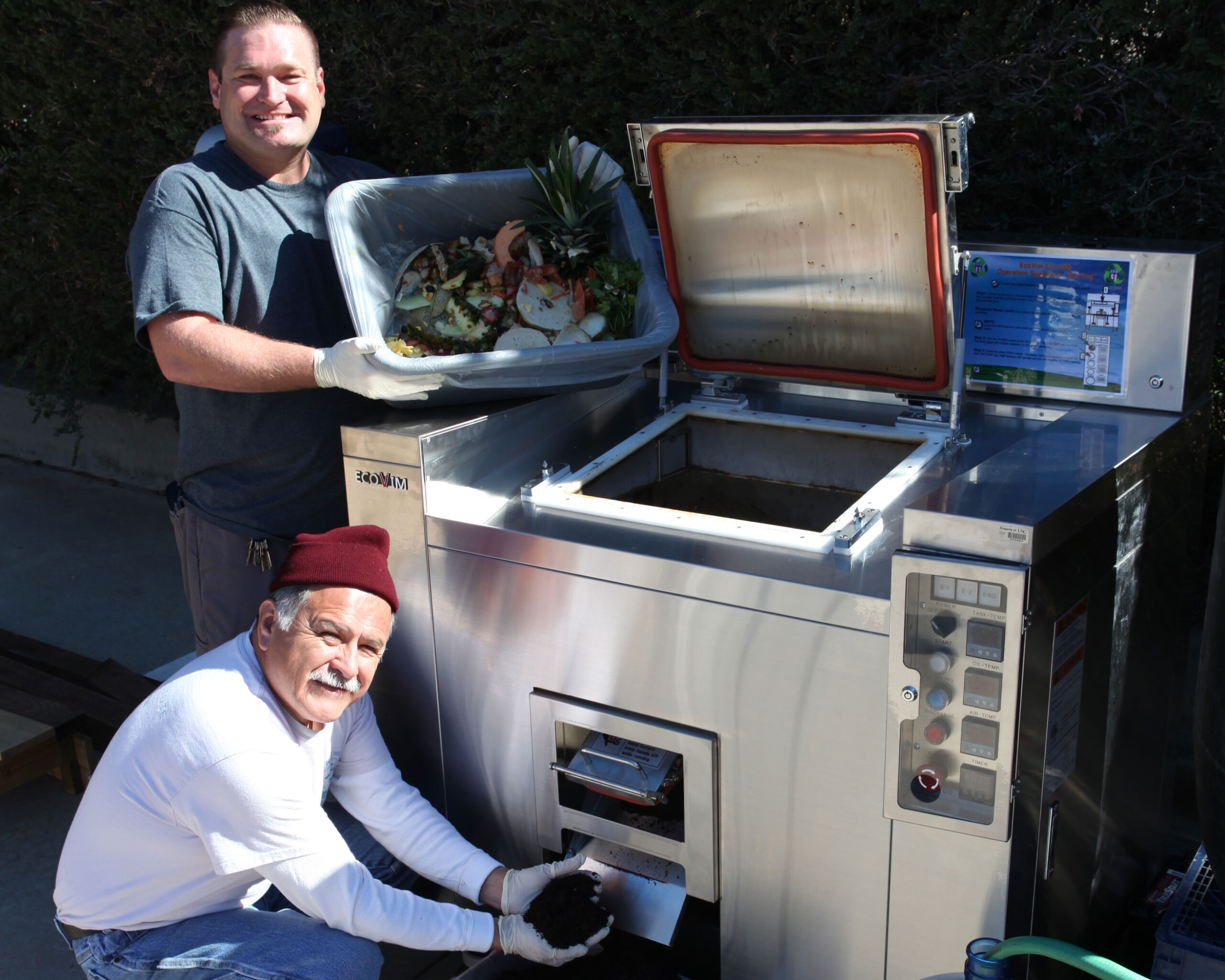Sustainability @ WMSC
Real-World Sustainability Experiments
At the Wrigley Marine Science Center (WMSC) on Catalina Island, sustainability isn’t just what we study–it’s what we do every day. Experimental and established sustainability solutions help power our operations as staff collect data to measure the impact. Our goal is to both test and benefit from sustainability best practices and new technology, in hopes of inspiring others to do the same.
Keep scrolling to learn about some of our key sustainability initiatives and where we hope to go in the future!
Solar Power
Solar panels on our dining hall provide a portion of the electricity needed to power the WMSC kitchen and housing. We’re also in the early stages of a multi-year project to construct a solar microgrid for our campus. Ultimately, we expect to supply approximately 90% of our electrical needs through solar power.
Use the link below to see real-time data on how our solar installation is helping the environment!

Dining
The WMSC dining hall focuses on sustainable practices. These include sourcing produce within a 150-mile radius, purchasing sustainably-raised meat proteins that include wild game, using compostable takeaway containers and utensils, using reusable table settings in the dining hall, and regularly serving vegetarian options. Our food dehydration system also converts almost all of our food waste–including meat and small bones–to compost, which helps keep our plants healthy and reduces their need for supplemental water.
Vehicle Fleet
The WMSC vehicle fleet is used for transporting students, staff, researchers, and equipment around our campus and to other locations on the island. Sixty-one percent of our fleet is currently electric, helping to keep Catalina Island’s pristine air clean. We also never wash our vehicles (the ones in the photo are brand-new), to help conserve the island’s precious water resources.
Energy-Efficient Upgrades
Just like you, we don’t like big electric bills! While our solar projects make us more sustainable on the supply side, we’re also upgrading our campus to be more efficient about the amount of electricity we consume. We’ve converted all our light fixtures to LED and purchased Energy Star appliances for the dining hall kitchen. Next up: new, more efficient HVAC units later this year.
Water Conservation & Filtration
Though it’s surrounded by the ocean, Catalina Island itself is an arid environment, so we carefully watch every drop of water we use. Shower timers and signage remind visitors to conserve water, and we use drought-friendly landscaping and rain barrels to help manage our watering needs. We also use rock dams and bioswales (natural-material barriers such as permeable fabric stuffed with hay) to slow down naturally occurring water runoff. This practice helps more water percolate back into the island’s water table and reduces the amount of soil and minerals that flow into our cove.
